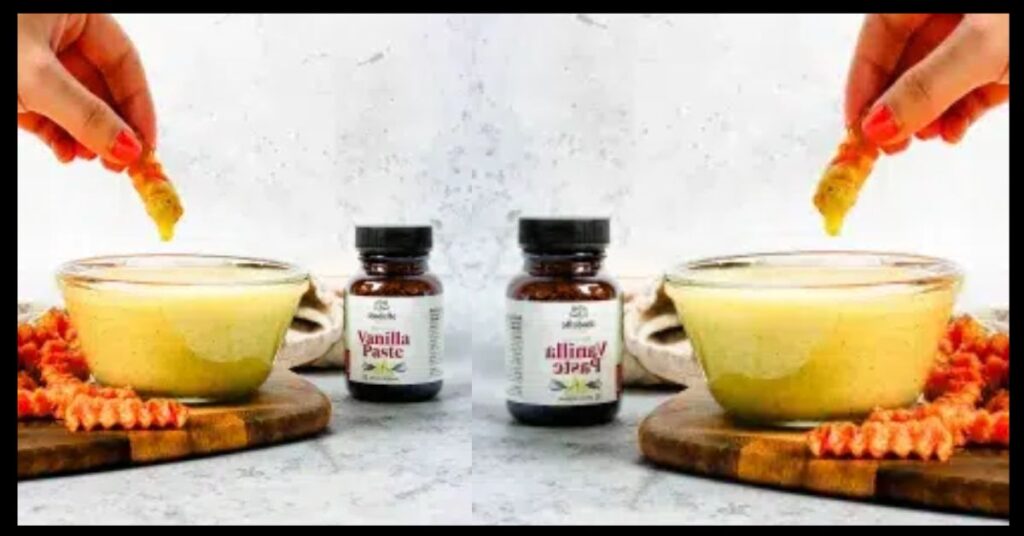Vanilla is a staple in kitchens around the world, prized for its sweet, aromatic profile that enhances baked goods, desserts, and even savory dishes. While vanilla extract is widely used, vanilla paste offers a richer flavor and visible vanilla bean specks that elevate any recipe. This article explores how to make homemade vanilla paste, its benefits, uses, and tips for storage—providing a valuable, SEO-friendly guide for general audiences.

Table of Contents
ToggleWhat Is Vanilla Paste?
Vanilla paste, also known as vanilla bean paste, is a thick, syrup-like substance made by combining vanilla bean seeds, vanilla extract, and a binder like invert sugar or corn syrup. Unlike vanilla extract, which is entirely liquid, vanilla paste contains actual flecks of vanilla beans, giving it a visual and flavor advantage in culinary applications.
Key characteristics of vanilla paste:
- Contains real vanilla seeds
- Has a thicker, syrup-like consistency
- Offers a more concentrated vanilla flavor
- Ideal for recipes where appearance and taste matter
Why Make Vanilla Paste at Home?
Making vanilla paste at home ensures quality control, cost-effectiveness, and authentic flavor. Commercial versions can be expensive and sometimes include additives or artificial flavors. Homemade versions allow the use of real vanilla beans and natural ingredients.
Benefits of homemade vanilla paste:
- Pure and preservative-free
- Customizable flavor intensity
- Cost-effective, especially when buying vanilla beans in bulk
- Long shelf life when stored properly
Ingredients Needed
Creating a homemade vanilla paste requires a few simple ingredients, many of which may already be in your pantry.
Ingredients:
- 6 to 8 vanilla beans (preferably Madagascar or Tahitian)
- ½ cup vanilla extract (alcohol-based, high quality)
- ¼ cup food-grade glycerin or light corn syrup (acts as a thickening agent)
- 1 tablespoon sugar (optional, for additional sweetness)
Tip: Use high-quality vanilla beans with moist, plump pods for best results.
Tools and Equipment
Recommended tools:
- Sharp paring knife
- Cutting board
- Small saucepan
- Blender or food processor
- Fine mesh strainer or cheesecloth
- Sterilized glass jar for storage
Using sterilized equipment helps increase the shelf life and maintains hygiene.
Step-by-Step Recipe: How to Make Vanilla Paste
Step 1: Prepare the Vanilla Beans
- Slice each vanilla bean lengthwise using a sharp knife.
- Scrape the seeds out using the back of the knife.
- Reserve both the seeds and pods for blending.
Step 2: Blend the Ingredients
- In a blender or food processor, combine the vanilla seeds, pods, vanilla extract, glycerin (or corn syrup), and sugar (if using).
- Blend until the mixture becomes smooth and thick. This may take a few minutes depending on the power of the blender.
Step 3: Strain the Paste (Optional)
- For a smoother texture, strain the mixture through a cheesecloth or fine mesh strainer.
- This step is optional if the paste’s slightly coarse texture is preferred.
Step 4: Store Properly
- Pour the vanilla paste into a clean, airtight glass jar.
- Store in a cool, dark place or refrigerate to extend shelf life.
- Shake before each use, as natural separation may occur.
Shelf Life and Storage Tips
Homemade vanilla paste can last up to 1 year if stored properly. Keep it in a cool, dark place and ensure the lid is tightly sealed after each use. Refrigeration is optional but can help maintain flavor and freshness over time.
Avoid:
- Direct sunlight
- Heat exposure
- Storing in non-airtight containers
How to Use Vanilla Paste in Recipes
Vanilla paste can replace vanilla extract in most recipes with a 1:1 ratio. It’s especially useful in:
- Cakes, cookies, and brownies
- Ice cream and custards
- Frostings and whipped cream
- Pancakes and waffles
- Beverages like milkshakes or lattes
The visible flecks of vanilla beans add a gourmet touch, making it ideal for high-end desserts or holiday baking.
Nutritional Information
While vanilla paste is used in small quantities, it generally contains minimal calories and sugar. The exact nutritional value depends on the ingredients used, especially the sweetener and extract.
According to the USDA, 1 teaspoon of commercial vanilla extract contains about:
- 12 calories
- 0g fat
- 0g protein
- 1g carbohydrate
Homemade versions may vary, especially if using sugar or syrups.
Substitutes and Variations
If vanilla paste isn’t available or preferred, consider these alternatives:
- Vanilla extract: Less intense, no bean specks
- Vanilla powder: Alcohol-free, fine for dry mixes
- Vanilla beans: Purest form, but expensive and labor-intensive
To adjust flavor intensity, modify the bean-to-extract ratio in your paste. For example, doubling the beans will result in a stronger flavor.
Cost Considerations
Vanilla beans can be expensive, especially when purchased retail. However, bulk online purchases can significantly reduce costs. For example, as of 2024, Grade B vanilla beans (ideal for pastes) cost around $1.50 to $2.00 per bean when bought in bulk [Source: Vanilla Food Company].
Homemade paste can cost as little as $2 to $3 per ounce, compared to $5 to $10 per ounce for premium store-bought varieties.
Conclusion
Vanilla paste is a versatile and flavorful ingredient that can elevate both sweet and savory dishes. By following this simple, step-by-step homemade vanilla paste recipe, it’s possible to enjoy the rich taste and visual appeal of real vanilla without the added cost or preservatives of store-bought alternatives.
Whether used in baking, beverages, or desserts, homemade vanilla paste is a valuable addition to any kitchen, combining aromatic flavor with culinary elegance.







